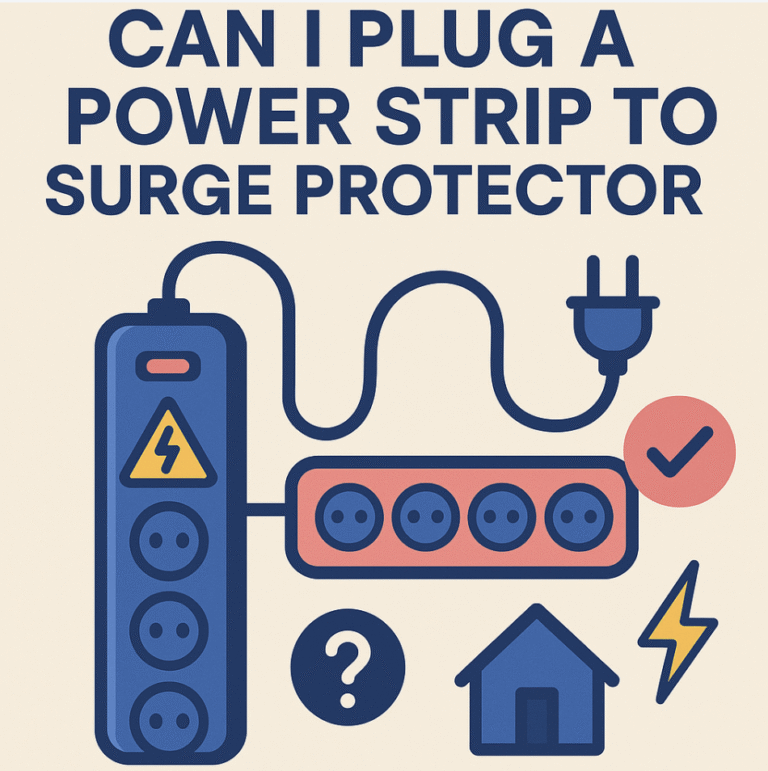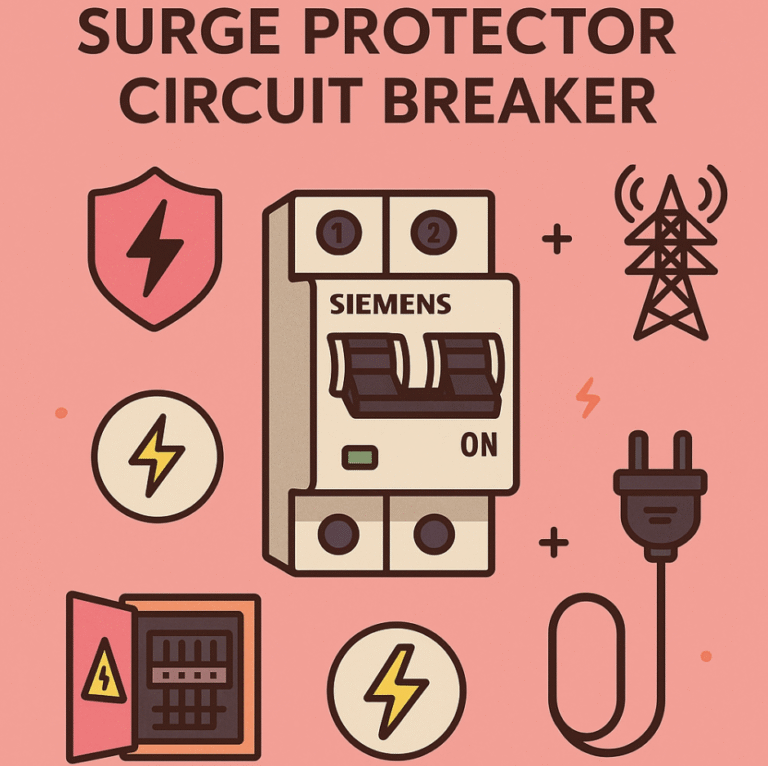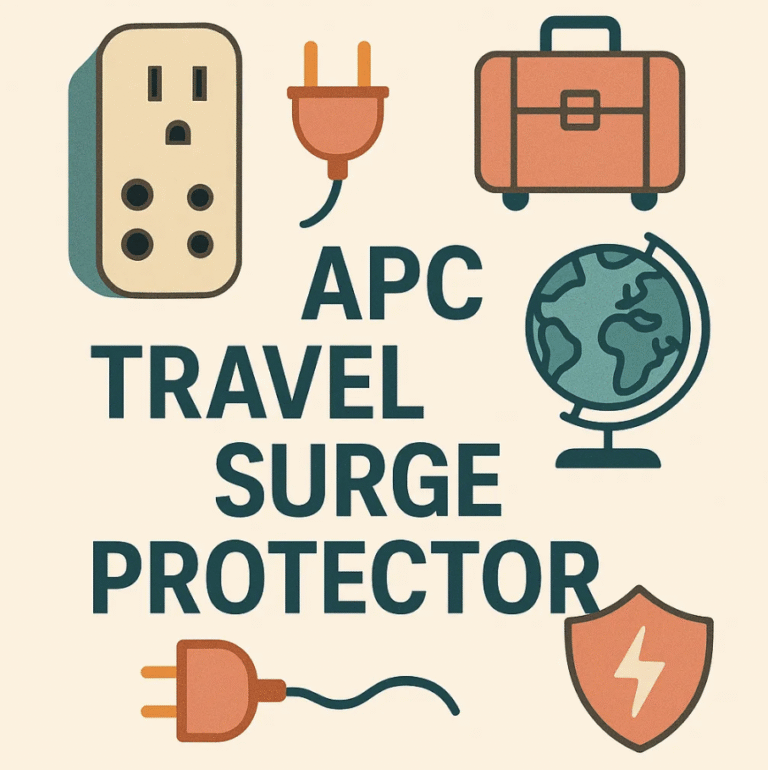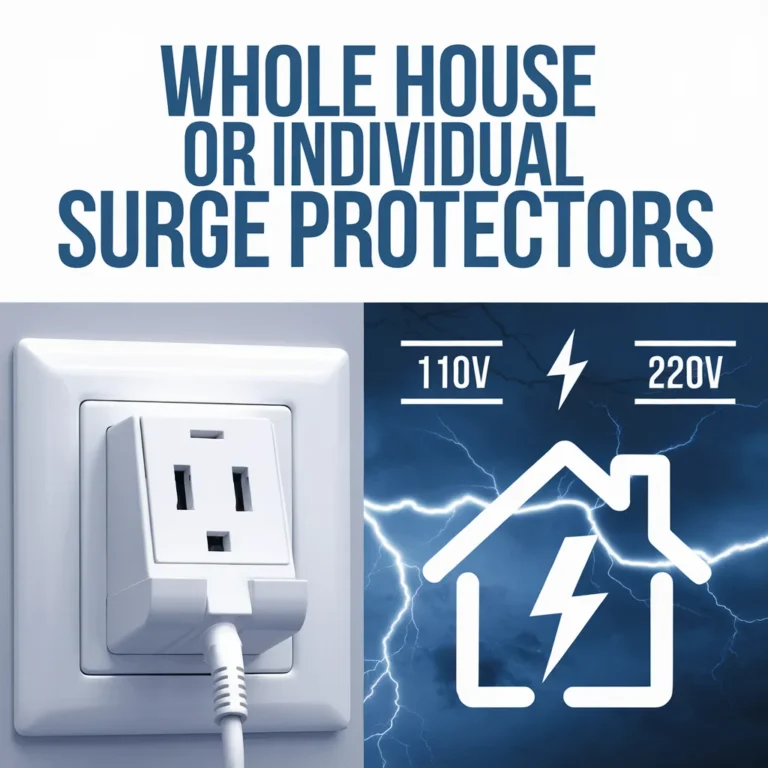How to Mount a Surge Protector Without Damaging Walls
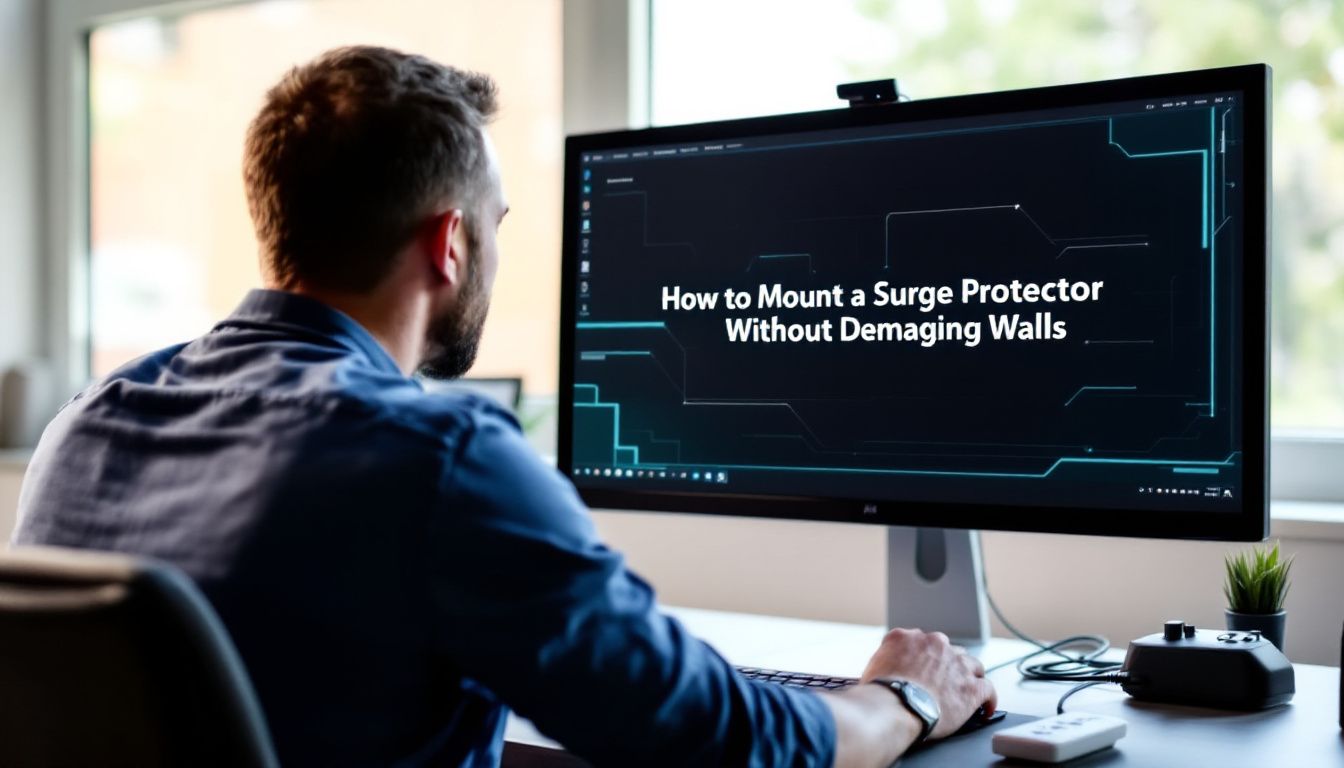
Learning how to mount surge protector devices without damaging your walls can seem challenging, but it doesn’t have to be. Knowing how to mount surge protector units properly ensures safety, functionality, and wall integrity.
Improper installation can result in unnecessary wall damage, leading to costly repairs. By understanding how to mount surge protector systems using the right techniques, you can securely install them while keeping your space intact.
In this post, you will learn mounting tips that not only protect your walls but also safeguard your devices from power surges, creating a clutter-free and organized setup.
What You Need to Mount a Surge Protector
Mounting a surge protector without damaging your walls requires the right tools and materials. Using proper supplies ensures a secure installation while maintaining the integrity of your walls.
Below, you’ll find a detailed checklist of what you need and where to get these items.
Tools and Materials Checklist
To mount your surge protection devices effectively, gather the following items:
Adhesive strips (e.g., Command Strips): These strips provide a strong hold without leaving residue or causing wall damage. They are ideal for lightweight surge protectors.
Velcro strips or mounting tape: Velcro strips allow for easy removal and repositioning, while heavy-duty mounting tape offers a more permanent solution for heavier devices.
Cable management clips (optional): These clips help organize cords, keeping your setup neat and preventing tangling.
Cleaning supplies (e.g., rubbing alcohol, microfiber cloth): Cleaning the surface ensures better adhesion for the mounting materials.
Each of these items plays a crucial role in ensuring a smooth and damage-free installation process. For example, adhesive strips like Command Strips are popular because they are easy to use and leave no marks when removed.
Similarly, Velcro strips offer flexibility, allowing you to detach and reattach the surge protector as needed.
Where to Buy These Materials
Finding these materials is simple, as they are widely available both online and in physical stores. Here are some reliable options:
Online retailers: Websites like Amazon and Home Depot offer a wide range of adhesive strips, Velcro, and cable management tools. You can compare reviews and prices to find the best options for your needs.
Local hardware stores: Stores such as Lowe’s or Ace Hardware often stock these materials. Visiting a store allows you to see the products in person and ask for recommendations.
Office supply stores: Retailers like Staples or Office Depot carry adhesive solutions and cable organizers designed for workspace setups.
For instance, the Anker Power Strip with Adhesive Mounting comes with a strong adhesive pad, making it a convenient choice for tool-free installation.
Similarly, Belkin Surge Protectors feature mounting holes for easy attachment to walls or baseboards, ensuring a secure fit.
When purchasing materials, consider the weight and size of your surge protector. Heavier devices may require stronger adhesive solutions, while lighter ones can rely on standard mounting strips.
Always check the product specifications to ensure compatibility with your surge protection setup.
Step-by-Step Instructions on How to Mount a Surge Protector
Step 1: Choose the Right Location
Selecting the ideal spot is crucial when learning how to mount surge protector devices. Start by evaluating the proximity of the surge protector to power outlets and the devices you plan to connect.
A location close to these points minimizes cord clutter and ensures efficient use of your surge protection setup.
Ensure the surface where you plan to mount the surge protector is flat, clean, and dry. Uneven or dirty surfaces can weaken the adhesive strips or Velcro, leading to poor attachment.
A smooth and stable surface provides the best foundation for secure mounting.
Step 2: Prepare the Surface
Proper preparation of the mounting surface is essential for a successful installation. Begin by cleaning the wall or surface with rubbing alcohol. This step removes dust, grease, and other residues that can interfere with adhesion.
Use a microfiber cloth to apply the alcohol and wipe the area thoroughly.
Allow the surface to dry completely before proceeding. Moisture can compromise the adhesive strength of the mounting materials.
A dry surface ensures the adhesive strips or Velcro will stick firmly, providing a reliable hold for your surge protection devices.
Step 3: Attach the Mounting Strips
Once the surface is ready, attach the mounting strips to the back of the surge protector. Peel off the backing from the adhesive strips or Velcro and press them firmly onto the surge protector.
Make sure to follow the manufacturer’s instructions for proper application. This ensures the adhesive bonds correctly and provides maximum support.
Position the strips evenly to distribute the weight of the surge protector. Uneven placement can cause the device to tilt or detach over time.
For heavier surge protectors, consider using heavy-duty adhesive strips designed to handle more weight.
Step 4: Secure the Surge Protector to the Wall
Position the surge protector carefully against the wall. Align it with the adhesive strips or Velcro you attached earlier. Press the surge protector firmly onto the surface, applying even pressure across its entire length. This step ensures the adhesive bonds securely to both the wall and the surge protector.
Follow the recommended pressing time provided by the manufacturer of the adhesive strips. Skipping this step can weaken the hold and cause the surge protector to detach over time.
After securing the surge protector, test its stability. Gently tug on it to confirm that it is firmly attached. If it feels loose or wobbly, reapply pressure or check if the adhesive strips were properly installed. Ensuring a secure fit is essential for maintaining the safety and functionality of your surge protection setup.
Once you are confident in its stability, proceed to connect your devices.
Step 5: Organize Cables (Optional)
Organizing cables improves the appearance of your setup and prevents potential hazards. Use cable management clips or ties to bundle cords neatly. Attach the clips to the wall or nearby furniture to guide the cables along a clean path.
This step reduces clutter and makes it easier to identify individual cords when needed.
Avoid overloading the surge protector with too many devices. Check the maximum load capacity of your surge protection device, which is usually listed in the product manual. Overloading can lead to overheating or reduced performance, compromising the safety of your devices.
Keep the number of connected devices within the recommended limit to ensure optimal surge protection.
A well-organized cable system not only enhances the aesthetics of your space but also ensures that your surge protectors function efficiently. Proper cable management minimizes the risk of tripping hazards and keeps your workspace or living area tidy.
Alternative Ways to Mount a Power Strip
Mounting a power strip doesn’t always require attaching it directly to a wall. You can explore alternative methods that suit your space and preferences while maintaining the functionality of your surge protectors.
These options provide flexibility and ensure your surge protection setup remains efficient and organized.
Using a Desk or Furniture Mount
Attaching a surge protector to your desk or furniture is a practical solution, especially in workspaces or home offices. This method keeps your surge protection devices accessible without cluttering your walls.
Choose the Right Spot: Identify a flat surface on the side or underside of your desk or furniture. Ensure the location is close to power outlets and device cords for easy access.
Prepare the Surface: Clean the area with rubbing alcohol to remove dust and grease. A clean surface ensures better adhesion for the mounting materials.
Attach the Surge Protector: Use adhesive strips or brackets designed for furniture. For adhesive pads, remove the protective film and press the surge protector firmly against the prepared surface. This step ensures a strong bond, as highlighted in the Anker 524 Power Strip guide.
Test the Stability: Gently tug on the surge protector to confirm it is securely attached. If it feels loose, reapply pressure or adjust the adhesive strips.
This method not only saves wall space but also keeps your cables neatly organized. It’s an excellent choice for those who prefer a clutter-free workspace.
Freestanding Surge Protector Placement
If you prefer not to mount a power strip, placing it on a flat surface is a simple and effective alternative. This option works well for surge protectors with longer cords or when wall or furniture mounting isn’t feasible.
Select a Stable Surface: Choose a flat and stable surface, such as a desk, shelf, or floor. Ensure the location is near a power outlet to minimize cord stretching.
Organize the Cables: Use cable organizers or ties to bundle cords neatly. This step prevents tangling and keeps your setup tidy.
Position the Surge Protector: Place the surge protector in a way that allows easy access to its outlets. Avoid placing it in high-traffic areas to reduce the risk of tripping hazards.
Freestanding placement offers flexibility and convenience. You can easily move the surge protector to different locations as needed, making it a versatile option for temporary setups or frequently rearranged spaces.
Both of these methods ensure your surge protection setup remains functional and safe. Whether you mount a power strip to furniture or use a freestanding approach, these alternatives help you maintain an organized and efficient environment without compromising the integrity of your walls.
Common Mistakes to Avoid When Mounting Surge Protectors
Mounting surge protectors can seem straightforward, but small mistakes can lead to poor results or even safety hazards.
Avoiding these common errors ensures your surge protection setup is secure, functional, and long-lasting.
Using the Wrong Type of Adhesive
Choosing the right adhesive is critical when you mount a power strip. Weak adhesives may fail to hold the weight of your surge protectors, causing them to fall. On the other hand, overly strong adhesives can damage your walls during removal.
For lightweight surge protectors, adhesive strips like Command Strips work well. Heavier devices may require heavy-duty mounting tape or Velcro strips.
Tip: Adhesive mounting methods are ideal for tool-free installation and prevent wall damage. Always check the weight limit of the adhesive product before use.
If you’re mounting under a desk, consider using mirror hangers or hooks. These provide a secure hold without relying solely on adhesives. Selecting the right adhesive or mounting method ensures your surge protection setup remains intact and safe.
Skipping Surface Preparation
Failing to prepare the surface is one of the most common mistakes. Dust, grease, or moisture can weaken the bond between the adhesive and the wall.
Before mounting, clean the surface with rubbing alcohol and a microfiber cloth. This step removes any residue that could interfere with adhesion.
Allow the surface to dry completely before applying adhesive strips. Skipping this step often leads to poor adhesion, causing the surge protector to detach over time. A clean and dry surface ensures a strong and reliable hold.
Potential Challenges and How to Overcome Them
Mounting a surge protector without damaging walls can sometimes present challenges. However, understanding these potential issues and knowing how to address them ensures a smooth and hassle-free installation process.
Below are common obstacles you might face and practical solutions to overcome them.
Adhesive Strips Not Sticking Properly
Adhesive strips are a popular choice for mounting surge protectors, but they can fail to stick if not applied correctly. To ensure a strong bond:
Clean and dry the surface thoroughly: Dust, grease, or moisture can weaken the adhesive. Use rubbing alcohol and a microfiber cloth to clean the wall. Let it dry completely before applying the strips.
Choose the right adhesive strength: Lightweight surge protectors work well with standard adhesive strips. For larger or heavier models, opt for heavy-duty strips designed to handle more weight. These provide a stronger hold and reduce the risk of detachment.
Pro Tip: If your adhesive strips still fail to stick, consider switching to Velcro strips. They offer flexibility and can handle heavier devices effectively.
Limited Wall Space
Sometimes, the available wall space may not accommodate your surge protector. This limitation can make mounting seem impossible. Instead of forcing it onto a cramped area, explore alternative solutions:
Mount on furniture: Attach the surge protector to the side or underside of a desk, table, or cabinet. This method keeps your walls intact while maintaining easy access to the outlets.
Use freestanding placement: Place the surge protector on a flat surface, such as a shelf or desk. Organize the cables neatly to prevent clutter and tangling.
These alternatives not only save wall space but also allow you to maintain an organized and functional setup.
Difficulty Managing Cables
Cables can quickly become tangled and messy, especially when connecting multiple devices to a surge protector. Poor cable management not only looks untidy but can also create safety hazards. To keep cords under control:
Use cable ties or clips: Bundle cords together with ties or secure them along walls or furniture using clips. This keeps them organized and prevents them from tangling.
Avoid overloading the surge protector: Plugging in too many devices can lead to overheating and reduced performance. Check the surge protector’s maximum load capacity and stay within its limits.
Did You Know? Overloading a surge protector can cause it to trip or even lead to electrical fires. Proper cable management and load distribution enhance both safety and efficiency.
Mounting a surge protector without damaging walls is simpler than it seems when you follow the right steps. You now know how to mount surge protector devices effectively, from choosing the ideal location to securing it with adhesive strips or Velcro.
These methods ensure your walls remain intact while providing reliable surge protection for your devices.
Implementing these techniques not only safeguards your electronics from power surges but also creates a clutter-free and organized space. Take action today to enhance your setup and enjoy the peace of mind that comes with a safe and efficient surge protection system.

